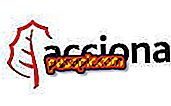How to organize the financial documentation of a company

A correct organization of financial documentation is a determining factor in the proper functioning of any company. And, in addition, to optimally manage economic resources, carry out a daily control of accounting documents is essential to be aware of all transactions and to quickly resolve the liquidity problems that may arise. It is also very important at the legal level, since having all the documentation ordered and updated can facilitate compliance with legal obligations and avoid possible problems and claims by the State. In the following article we show you some simple methods to organize the financial documentation of a company .
one
The key to having full control of the documentation lies in the task of organizing, identifying, codifying and archiving daily all the documents related to the economic exercise of the company. Thus, we can locate them easily and dispose of them when required, so it is also very important to be neat and maintain an order when doing so to avoid errors or loss of documents. Let's see, below, simple and practical solutions for the organization of physical documents.
two
Focusing on the billing, a good option is to file separately, if any, the invoices of the suppliers and the invoices of the customers. The method we can follow is to define and assign a countable number for each of the suppliers and customers and classify the invoices in filing cabinets that contain this numbering. A simple way to do it would be to use a different filing cabinet for clients and suppliers, sorting in alphabetical order and always following a chronological order for each, avoiding temporary disorders. Another option to complete the invoice file, would be to do it using an excel table to keep track of the invoices that have been issued and received, in case of need, to facilitate your search.

3
Other important accounting documents are those that make effective the payment of taxes corresponding to the activity of the company. The simplest thing is to establish an organization by type of taxes (VAT, IRPF, Corporation Tax, etc.) and file them following this criterion. It is always very important to archive it chronologically, as this will make it easier to find the required document later.
4
Regarding the management of matters related to the human team of the company, an efficient alternative is to enable a filing cabinet to classify the documents of each one of the employees. That is, collect in folders both the files of each worker, such as their employment contract, payroll, benefits, medical reviews, etc. You must be very careful and disciplined with this file, since it is information that all company workers can not know because it contains confidential information, so it would be important to keep it locked or in a private place. In addition, it should always be available in case of a possible inspection.

5
In addition to organizing physical documents well, it is essential to have an adequate organization of all digital files, and an exceptional way of achieving this is to have the service of an accounting manager. It will be possible to manage all accounting, tax and labor issues of our business, having the information and tools we need at any time. In this way, we will have all the business documents well located and within our reach.


